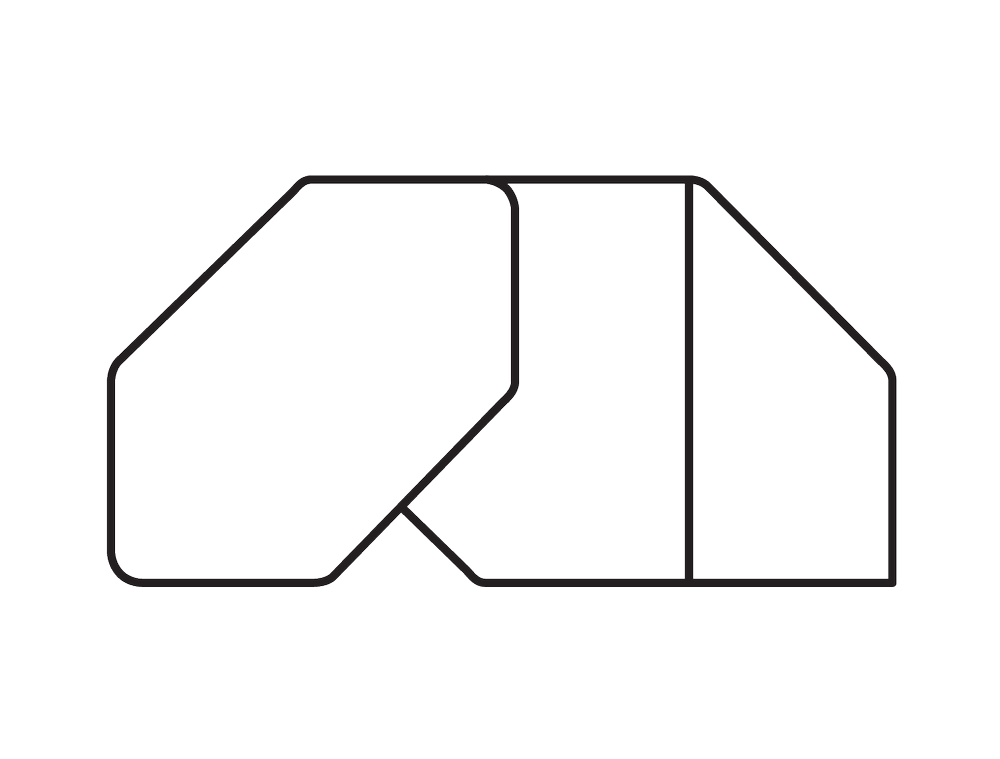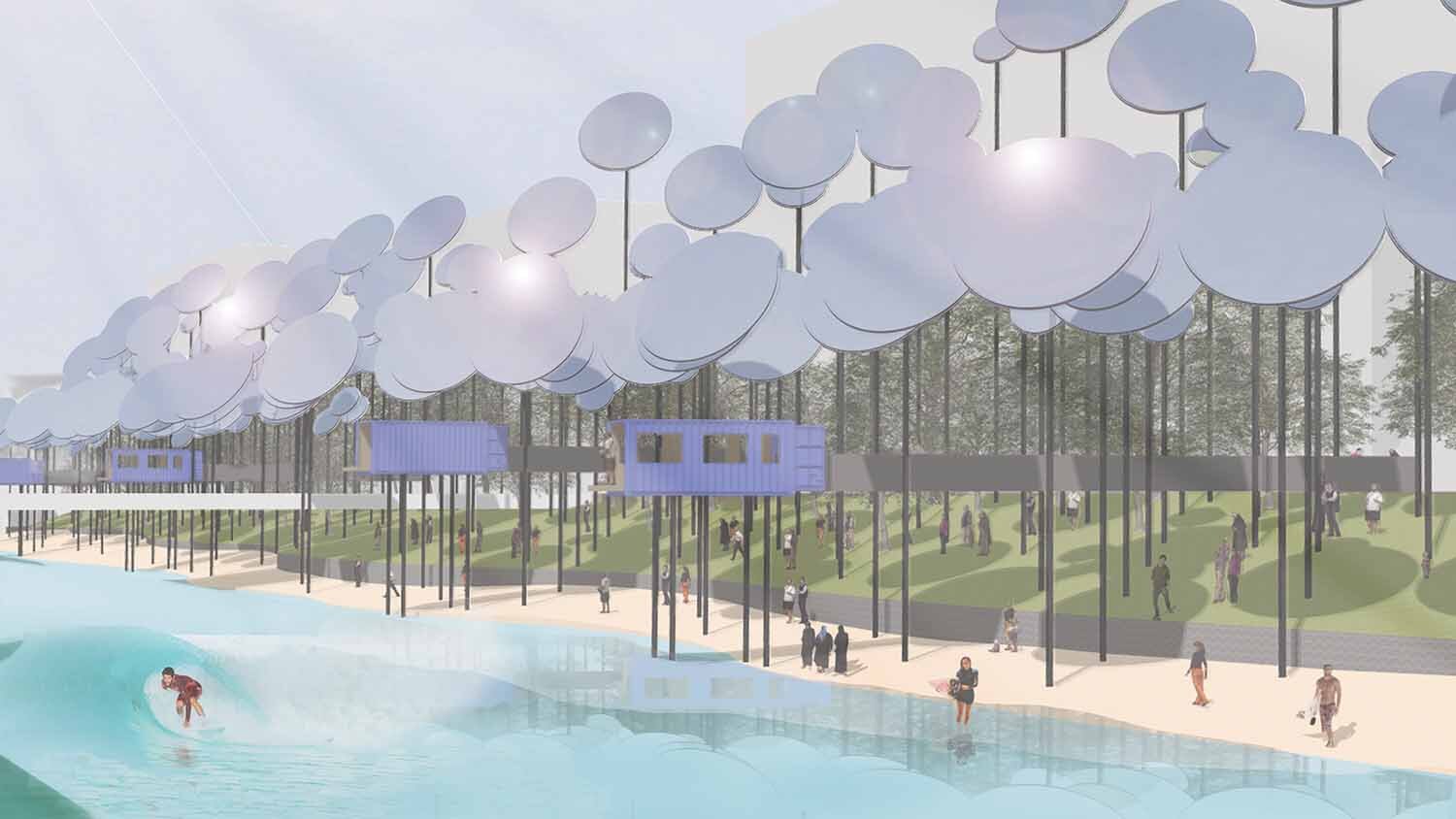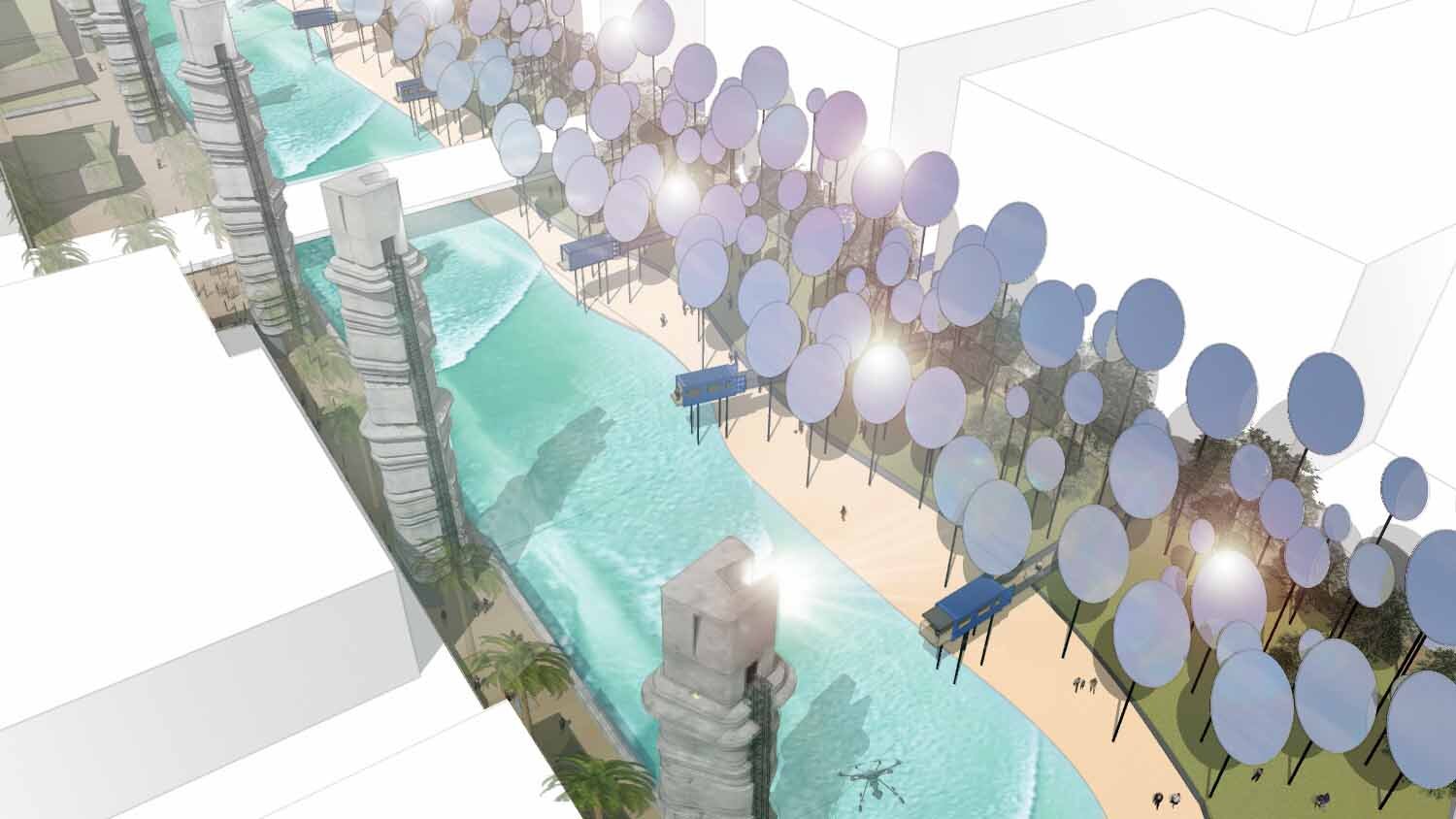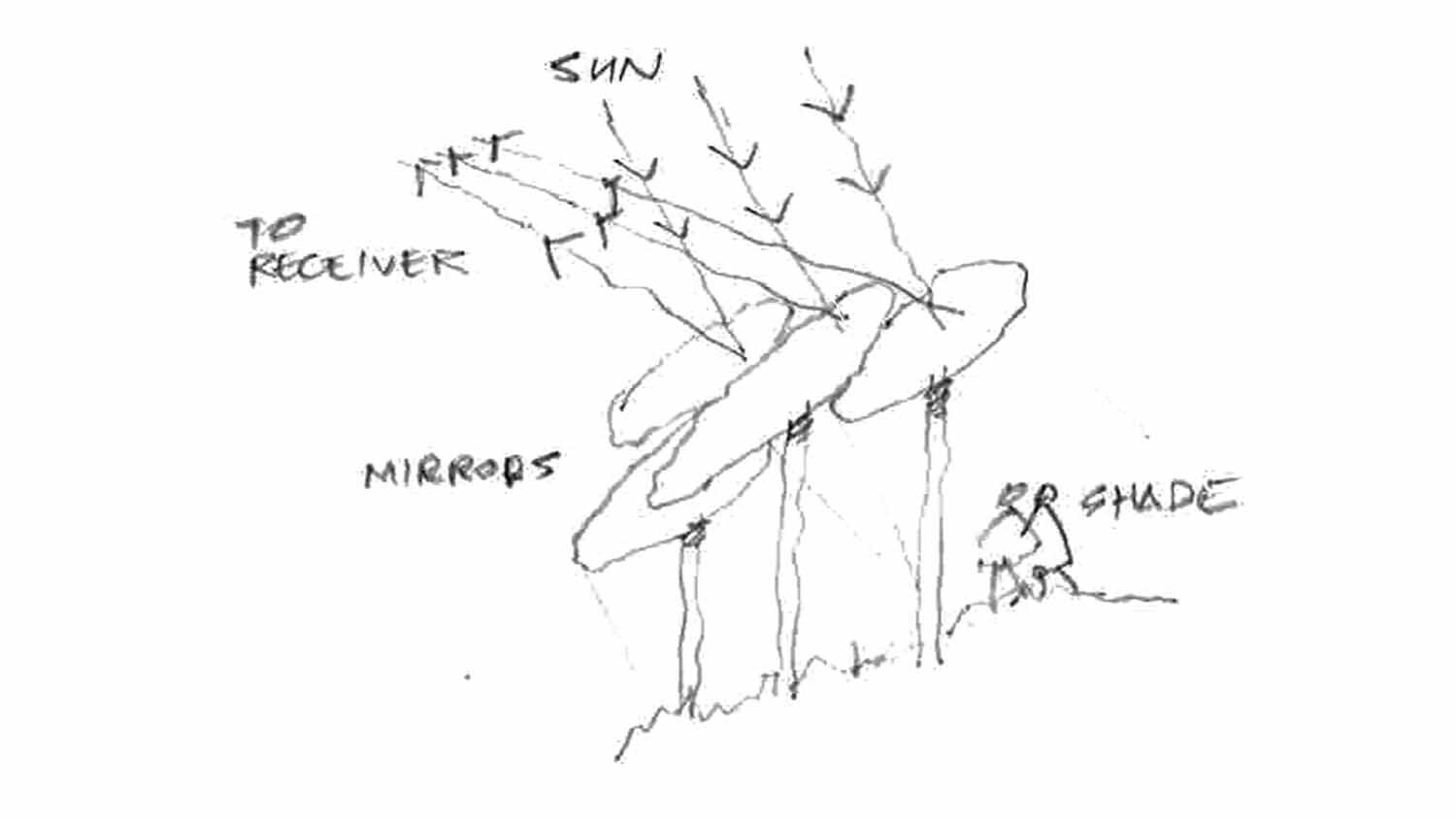HELIO-SURF FOREST
Competition Entry for site in Dubai, UAE
ENERGY SUMMARY
Total energy from 1.1MWe CSP solar towers:
1,100,000W x 8760 (hours) x 0.65 (capacity factor) = 6,200 MWh annually.
Total energy recovery from hydro-turbine:
(12) x 10kW low head hydro turbines x 8760 (hours) x 0.2 (capacity factor) = 210,000KWh annually.
Surfers have been tapping into natural energy for generations. Ancient Polynesian cultures even considered the activity of surfing to be on a spiritual level. HELIO-SURF-FOREST adds another dimension; connecting people to waves driven directly from the sun’s rays. Here, surfers and onlookers alike can be immersed in the physical transformation of solar energy into electricity and perfect, ridable waves.
HELIO-SURF-FOREST is the integration of a 1.1MWe concentrated solar power (CSP) plant with inland surfing facility that incorporates hydro-energy recovery. A series of solar towers along the edge of a proposed urban lagoon house receivers that are fed condensed solar energy from an elevated heliostat ‘forest’ opposite. The receivers super-heat a sodium heat transfer fluid which is converted to steam and stored to drive a turbine that generates electricity all day and into the night. Enough power is provided to pump continuous two metre waves all year round and supply electricity to the grid for domestic and commercial use. Hydro-turbines are placed under a boardwalk on the southern side of the lagoon to recover otherwise lost energy from the waves and return further electricity to the system.
“Solar towers might become the technology of choice in the future, because they can achieve very high temperatures with manageable losses by using molten salt as a heat transfer fluid. This will allow higher operating temperatures and steam cycle efficiency, and reduce the cost of thermal energy storage by allowing a higher temperature differential. Their chief advantage compared to solar photovoltaics is therefore that they could economically meet peak air conditioning demand and intermediate loads (in the evening when the sun isn’t shining) in hot arid areas in the near future.” (IRENA Working Paper “Renewable energy technologies - Cost analysis series” June 2012.)




